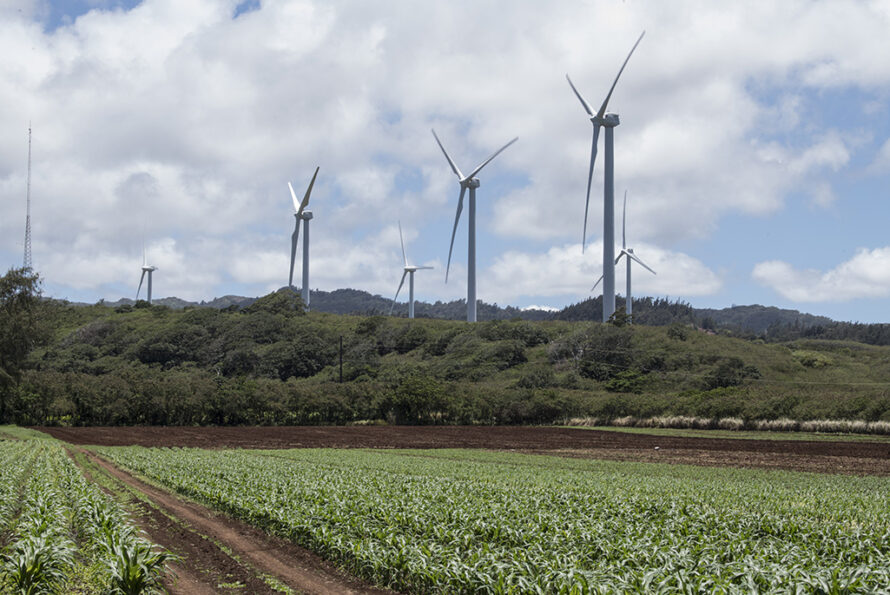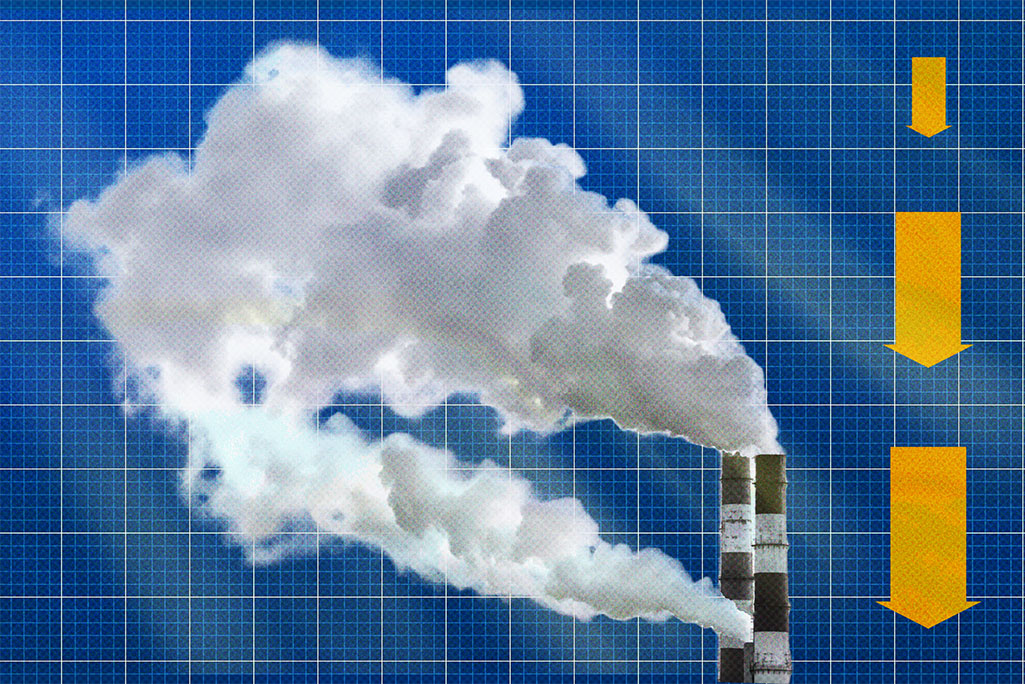A machine that sucks carbon emissions from the atmosphere might sound like science fiction, but it is one of several carbon dioxide removal (CDR) technologies expected to help achieve net-zero emissions by 2050. While emission mitigation is the current priority, CDR will eventually tackle “residual emissions” from sectors like heavy industry and agriculture that may be too costly to fully decarbonize. Technologies like direct air capture and storage (DACS), biomass carbon removal and storage (BiCRS), and mineralization offer promising ways to achieve this goal by removing and storing CO2 long-term.
Despite continued growth in CDR purchases, a key issue remains: there is no standardized method to determine how much carbon these projects are actually removing, according to Corinne Scown and Sarah Nordahl, two scientists at the Department of Energy’s Lawrence Berkeley National Laboratory (Berkeley Lab).
In a new paper in the journal One Earth, Scown and Nordahl, along with colleagues from Lawrence Livermore National Laboratory, National Renewable Energy Laboratory, and UC Berkeley, propose a solution to address this problem. They outline the basics of a carbon accounting framework that provides methodologies to help account for all emissions within a range of CDR projects. The ultimate goal is to enable buyers of CDR and carbon credits to know exactly what they are paying for and to build trust that CDR development today will result in technologies that continue to remove atmospheric CO2 into the future, when they are needed most.
In this Q&A, Scown and Nordahl discuss the basics of their carbon accounting framework and how it could be used to evaluate the effectiveness of CDR technologies in achieving a net flux of CO2 out of the atmosphere and into stable storage.
Corinne Scown is a senior scientist in the Energy Analysis and Environmental Impacts (EAEI) Division at Berkeley Lab.
Sarah Nordahl is a postdoctoral researcher in the EAEI Division at Berkeley Lab.
Q: Why is it critical to accurately quantify and value the impact of carbon dioxide removal (CDR) projects, and how is this analysis conducted today?
 Corinne Scown: There are lots of companies that, understandably, want to reduce their greenhouse gas emissions footprint but have limited control over their supply chains. For example, if I were running a company and wanted to become carbon neutral, it wouldn’t be feasible to do that solely through improving our own operations. The electricity grid doesn’t change overnight, renewable fuels and electrified vehicles aren’t always available for transportation, and some industrial processes are still very difficult to decarbonize. Companies historically turned to carbon offsets, where they paid for emission reductions elsewhere in the economy and counted those reductions against their own “books,” so to speak. However, carbon offsets have developed a mixed reputation (to put it generously) because of projects that did not deliver on their promises, for a variety of reasons. That’s why carbon dioxide removal is gaining attention. CDR projects like direct air capture, which physically removes CO2 from the air and stores it, are more traceable and verifiable. But we need to account for the energy used in the process and determine the net removal of CO2 to ensure companies are getting real value for their investments. This paper discusses the different accounting standards and aims to set a rigorous framework for carbon accounting specific to CDR.
Corinne Scown: There are lots of companies that, understandably, want to reduce their greenhouse gas emissions footprint but have limited control over their supply chains. For example, if I were running a company and wanted to become carbon neutral, it wouldn’t be feasible to do that solely through improving our own operations. The electricity grid doesn’t change overnight, renewable fuels and electrified vehicles aren’t always available for transportation, and some industrial processes are still very difficult to decarbonize. Companies historically turned to carbon offsets, where they paid for emission reductions elsewhere in the economy and counted those reductions against their own “books,” so to speak. However, carbon offsets have developed a mixed reputation (to put it generously) because of projects that did not deliver on their promises, for a variety of reasons. That’s why carbon dioxide removal is gaining attention. CDR projects like direct air capture, which physically removes CO2 from the air and stores it, are more traceable and verifiable. But we need to account for the energy used in the process and determine the net removal of CO2 to ensure companies are getting real value for their investments. This paper discusses the different accounting standards and aims to set a rigorous framework for carbon accounting specific to CDR.
 Sarah Nordahl: Emissions mitigation and carbon dioxide removal are both necessary for combating climate change. However, there’s a distinction between these two types of climate change solutions. Mitigation needs to come first – we have to reduce emissions as much as possible. But there will always be hard-to-abate emissions, such as N2O from agricultural soils, that we can’t fully control. CDR comes in to compensate for these remaining emissions and also addresses legacy emissions from industrialization. For CDR technologies to be ready for large-scale deployment when needed, we need investment for research and development now. That’s why accurately quantifying their effectiveness and potential today is critical. Most analyses currently rely or draw on life cycle assessment (LCA), which evaluates the total greenhouse gas footprint. In contrast, carbon accounting CDR should use a more rigorous framework to differentiate between emissions mitigation and actual removal. This framework is the subject of our paper.
Sarah Nordahl: Emissions mitigation and carbon dioxide removal are both necessary for combating climate change. However, there’s a distinction between these two types of climate change solutions. Mitigation needs to come first – we have to reduce emissions as much as possible. But there will always be hard-to-abate emissions, such as N2O from agricultural soils, that we can’t fully control. CDR comes in to compensate for these remaining emissions and also addresses legacy emissions from industrialization. For CDR technologies to be ready for large-scale deployment when needed, we need investment for research and development now. That’s why accurately quantifying their effectiveness and potential today is critical. Most analyses currently rely or draw on life cycle assessment (LCA), which evaluates the total greenhouse gas footprint. In contrast, carbon accounting CDR should use a more rigorous framework to differentiate between emissions mitigation and actual removal. This framework is the subject of our paper.
For CDR technologies to be ready for large-scale deployment when needed, we need investment for research and development now. That’s why accurately quantifying their effectiveness and potential today is critical.
– Sarah Nordahl
Q: The One Earth paper describes a new carbon dioxide removal accounting framework. Can you describe this framework and how it improves on existing approaches?
Scown: Our framework uses expansive system boundaries to avoid misleading results. For example, if a facility uses both fossil fuel and biomass, we can’t just look at the biogenic CO2 being captured. We need to consider the emissions from burning fossil fuels too. You might reduce emissions, but that’s not the same as carbon removal if the whole project is still a net emitter. The paper emphasizes the difference between mitigation and removal, and argues for a carbon accounting framework that reflects only actual removal from the atmosphere, not just emission reductions. This differs from life cycle assessments, which credit both mitigation and removal, potentially blurring the lines between the two.
Nordahl: The framework we propose can be used to determine if a CDR project achieves a net flux of CO₂ out of the atmosphere into durable storage. Unlike LCA, where you might get credits for avoiding emissions or producing co-products, our framework excludes such credits when quantifying removal. We also advocate for expansive system boundaries – considering all upstream emissions, even for waste products like corn stover. With expansive system boundaries, we can differentiate between processes that result in net removals versus those that mitigate emissions from upstream processes.
Q: What are some real-world examples of how this accounting framework could be applied to CDR projects?
Scown: Let’s take direct air capture (DAC) as an example. In a DAC project, CO2 is captured from the air, compressed, and stored underground. Our framework ensures that we account for all the emissions associated with this process, such as the energy required for capture and storage. If the project is using renewable energy, it can achieve a very high net CO2 removal rate. If fossil fuels are involved, those emissions need to be subtracted from the total carbon removed, providing a clearer picture of the project’s actual impact.
Nordahl: For biomass carbon removal and storage (BiCRS) systems, the framework would look at the entire lifecycle of the biomass feedstock – starting from when it’s grown, through its processing, and ultimately to its storage. For a BiCRS system to achieve net removal under our framework, the carbon removed and stored must exceed the emissions generated by growing, harvesting, transporting, and transforming the biomass. This holds true for waste products like agricultural residues. For example, if the BiCRS feedstock is corn stover, the full burden of the corn cultivation is included in our framework. For waste feedstocks, if the waste would have otherwise provided some carbon removal and storage benefits, then only the additional storage due to the CDR intervention is credited in our framework.
Q: What are the next steps in terms of getting this framework adopted?
Scown: The next step is collaboration with key stakeholders in the CDR industry – project developers, governments, and investors. We just co-led a very productive workshop that got relevant folks in the same room to refine the framework and get feedback from those who will ultimately be using it. CDR has a meaningful role to play in meeting our climate change mitigation goals and we want to make sure we are establishing a level playing field for all the entities trying to grow that industry. The long-term benefit is a more trustworthy carbon removal market. As the industry grows, we need a reliable, transparent way to measure and verify the environmental impact of each project, which this framework provides.
CDR has a meaningful role to play in meeting our climate change mitigation goals and we want to make sure we are establishing a level playing field for all the entities trying to grow that industry.
– Corinne Scown
Nordahl: Widespread adoption will depend on buy-in from both the public and private sectors. The framework needs to be tested across different types of CDR projects to ensure it’s adaptable and effective. Long-term, the benefits are significant – this will help standardize the industry, improve the credibility of carbon credits, and encourage more investment in high-quality CDR projects. It will also help policymakers and companies align their efforts toward net-zero goals with greater confidence.
Q: What’s needed in the future to further the adoption of carbon dioxide removal technologies in general?
Scown: One of the biggest things we need is cleaner energy supply chains. Many CDR technologies, like DAC, require large amounts of energy. As grids become more decarbonized, the net removal from these technologies will improve significantly. Additionally, we need ongoing research and development to bring down costs and improve efficiency. Strong policy support and financial incentives will also be critical to ensure these technologies scale in time to make a real impact on climate goals.
Nordahl: The effectiveness of many CDR technologies depends on broader mitigation efforts, especially in decarbonizing energy. As these changes happen, CDR technologies will have a better chance of achieving their full potential. Further adoption will also depend on building a robust market for CDR credits and ensuring buyers can trust that what they’re purchasing represents real, verifiable carbon removal. Policy frameworks need to evolve to incentivize the development of these technologies, and there needs to be more investment in infrastructure to support the scaling of CDR projects. Public awareness is also important; the more people understand the role of CDR in achieving climate goals, the more support these technologies will receive.
###
Lawrence Berkeley National Laboratory (Berkeley Lab) is committed to delivering solutions for humankind through research in clean energy, a healthy planet, and discovery science. Founded in 1931 on the belief that the biggest problems are best addressed by teams, Berkeley Lab and its scientists have been recognized with 16 Nobel Prizes. Researchers from around the world rely on the Lab’s world-class scientific facilities for their own pioneering research. Berkeley Lab is a multiprogram national laboratory managed by the University of California for the U.S. Department of Energy’s Office of Science.
DOE’s Office of Science is the single largest supporter of basic research in the physical sciences in the United States, and is working to address some of the most pressing challenges of our time. For more information, please visit energy.gov/science.



